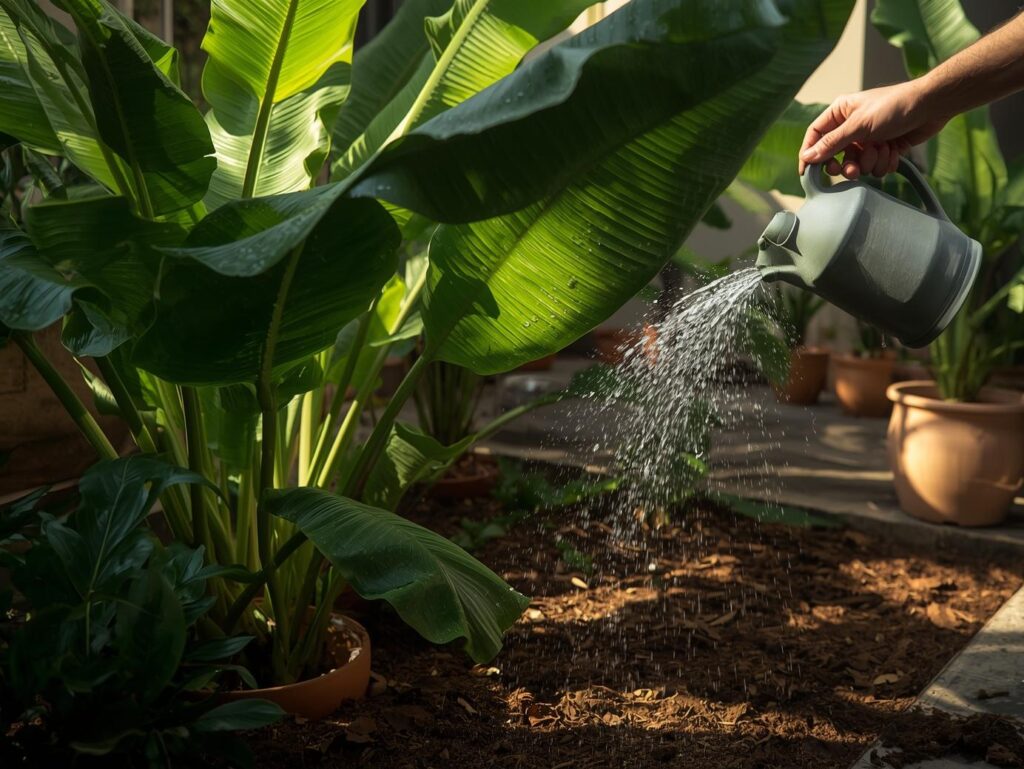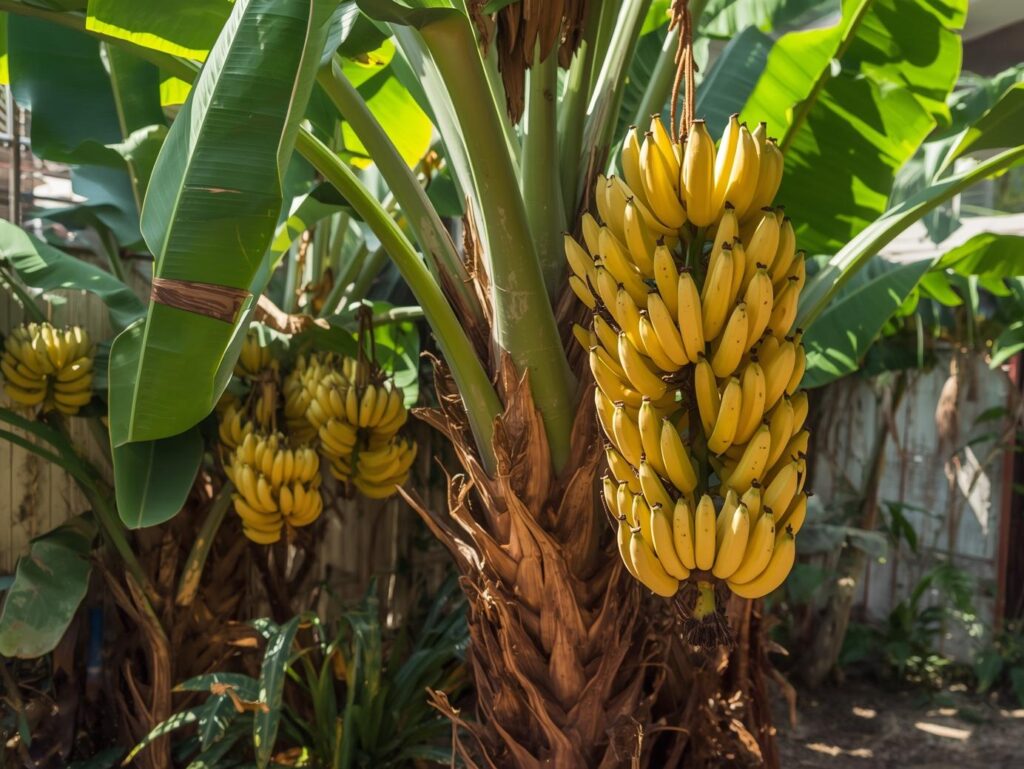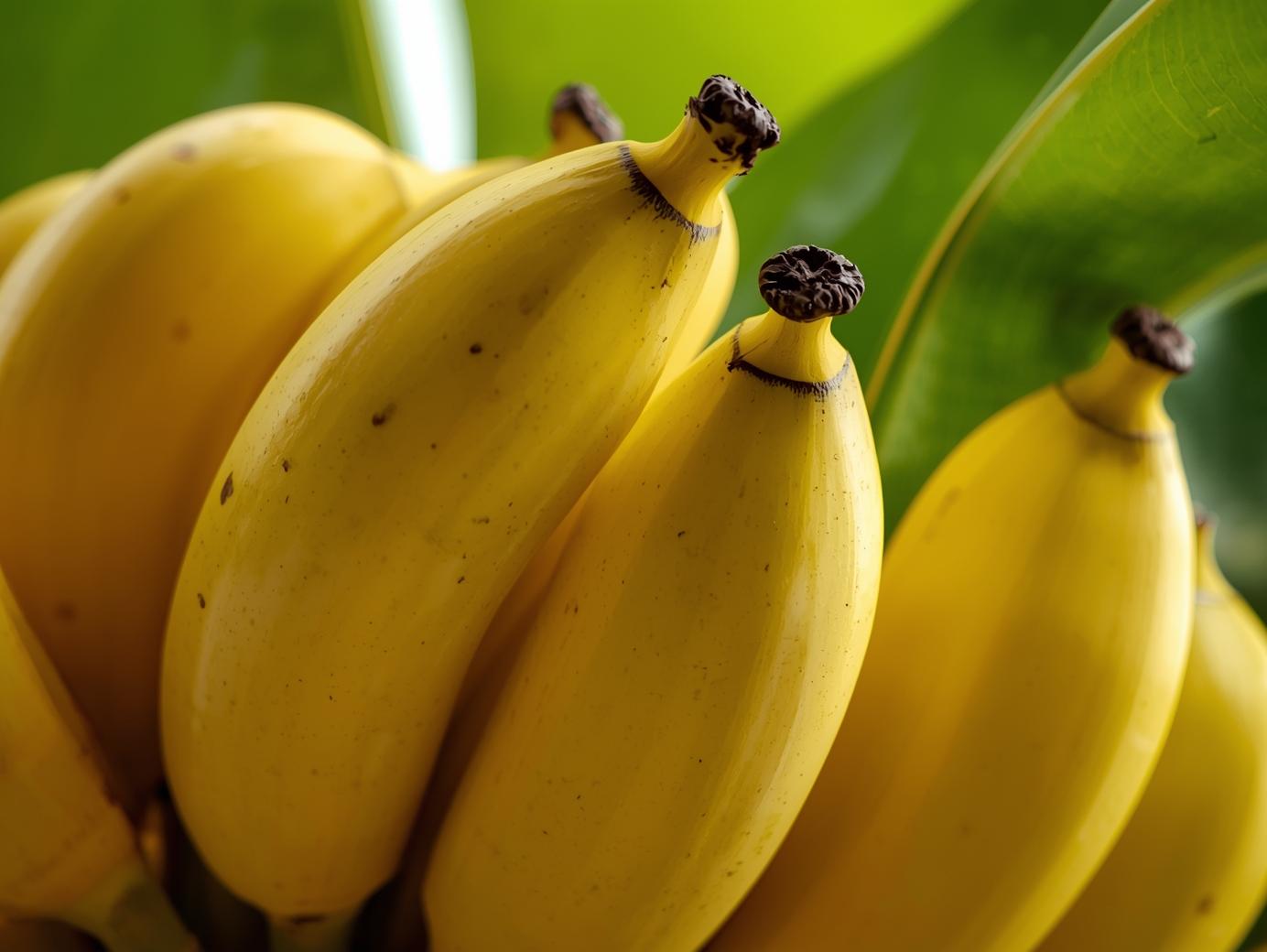Banana plants can be a striking and fruitful addition to home courtyards in the United States, especially in warmer regions or when grown in containers that can be moved indoors during colder months. Though typically associated with tropical climates, bananas can thrive with proper care and attention, providing lush foliage and delicious fruit. This guide will cover the essential aspects of growing banana plants in a home courtyard, from soil selection to harvesting.
Soil Selection
Banana plants thrive best in rich, well-drained soils that retain moisture without becoming waterlogged. A loamy soil with high organic content is ideal to support the vigorous root system. The soil pH should be slightly acidic to neutral, ideally between 5.5 and 7.0, to allow optimal nutrient uptake. Before planting, incorporate ample organic matter such as compost or well-aged manure to improve soil fertility and drainage. Avoid heavy clay soils or poorly draining areas, as excess moisture can cause root rot and other diseases.
Site Preparation
Selecting the right site for your banana plant is critical for its success. Bananas require full sun to partial shade, with at least six hours of sunlight daily to promote healthy growth and fruiting. The planting area should be sheltered from strong winds, which can damage the large leaves. Clear the site of weeds, debris, and rocks, then loosen the soil to a depth of at least 12 inches to ensure good root penetration. If planting in containers, choose a large pot with adequate drainage and use a high-quality, well-draining potting mix enriched with organic matter.
Planting
Banana plants are typically propagated using suckers or tissue-cultured plants. Planting is best done in spring after the risk of frost has passed and temperatures have warmed. When planting in the ground, dig a hole slightly larger than the root ball, position the plant upright, and backfill with amended soil. Ensure the plant is not buried too deep to prevent stem rot. For container planting, place the plant in a pot large enough to accommodate its rapid growth and water thoroughly after planting to help settle the soil.
Watering
Banana plants are thirsty and require consistent moisture to thrive. They prefer deep, regular watering to keep the soil evenly moist but not soggy. During the growing season, watering two to three times per week is usually sufficient, adjusting frequency based on weather and soil conditions. Mulching around the base helps retain moisture and regulate soil temperature. Overwatering should be avoided, especially in poorly drained soils, to reduce the risk of root diseases.

Fertilizing
Banana plants are heavy feeders and require regular fertilization for vigorous growth and fruit production. Use a balanced fertilizer with higher potassium content to promote flowering and fruit development. Feeding should begin shortly after planting and continue every month during the growing season. Organic fertilizers such as compost tea, fish emulsion, and well-aged manure can also be applied to enhance soil health. It is important to follow recommended rates and avoid over-fertilizing, which can lead to excessive leaf growth at the expense of fruiting.
Pruning and Training
Pruning banana plants mainly involves removing dead or damaged leaves to maintain plant health and appearance. After fruiting, the main stem that produced the banana bunch will die back and should be cut at ground level to make way for suckers, which will grow into new fruiting stems. Selecting and training one or two strong suckers per plant ensures continuous production. In confined courtyard spaces, controlling sucker growth is essential to prevent overcrowding and maintain airflow around the plants.
Pest and Disease Control
Banana plants can be affected by pests such as aphids, spider mites, and banana weevils, as well as diseases including Panama disease and Sigatoka leaf spot. Regular monitoring for signs of infestation or disease is crucial for early intervention. Maintaining plant health through proper watering, fertilization, and sanitation helps reduce susceptibility. Natural remedies, such as neem oil or insecticidal soaps, can be effective in managing pests in a home garden setting without harming beneficial insects.
Fruiting and Harvest

Banana plants generally take nine to twelve months to produce fruit after planting. Flowering occurs as a large, hanging inflorescence, followed by the development of banana hands that mature over several weeks. The fruit is ready to harvest when the bananas have fully filled out, are plump, and begin to change color from green to a lighter yellow. Harvest carefully by cutting the entire cluster to avoid damaging the plant. Allow bananas to ripen off the plant at room temperature for the best flavor and texture.
